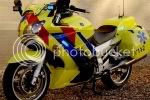quote name='mindtrip' date='Jun 12 2006, 10:49 PM' post='111479']
As a physician, I pack a fairly heavy amount of medical gear on a trip. In general I agree with the above posts; gauze roll or 2x2 or 4x4 pads, bandaids, NSAID, surgical tape and/or athletic tape (athletic tape tends to stick better, especially in wet/sweaty conditions, though mind the hair when removing--y'ouch! And as always, NEVER wrap tightly or you will impede blood flow and do more damage than good). At medical supply shops you can get small, single-shot packets of betadine gel, an excellent antiseptic, and carry a small tube of triple antibiotic ointment. I also recommend you ditch the small scissors and buy a pair of EMT scissors (about $8)--they cut through *anything*, including ski boots, and you never know when you'll need to cut a boot off to avoid damage from pulling. I also highly recommend moleskin--it has a million uses, like duct tape for your skin. If you need a sealed bandage, make a small pad out of gauze, cover the wound with triple antibiotic ointment, and cover the whole thing with moleskin--it will hold for a couple of days or more, and does a good job of keeping other junk out. For OTC stuff, I recommend benadryl, immodium, Tylenol (better as a fever reducer than NSAIDs), zantac or pepcid (for those roadside burritos.... mmmmmmm burritos), and melatonin (for sleep, like when you're camping in a stupid Harley resort and the drunk idiots won't let you sleep. And a train that goes by at 2:00am every night. Don't ask <_< ). And if you don't have any first aid training, I recommend a small emergency guide or flash-card pack to walk you through the basics.
I also would avoid using a tourniquet if you are not trained--again, you can do more damage than good. Almost all wounds are better treated with firm (sometimes *very* firm) direct pressure; if you're not careful to periodically release a tourniquet for a specified period of time you will make things much, MUCH worse. Trained paramedics virtually never use them, and you shouldn't either except in the rarest of circumstances--and if you can't distinguish which circumstances warrent one, think twice before using it.
[/soapbox]

If I'm travelling with a group I also carry baby aspirin, in case someone I'm riding with has a heart attack. Sounds silly, but the first, best thing you can do to someone you believe is having an MI is administer baby aspirin (no advantage to stronger aspirin, and more side effects), then call 911 and provide emergency cpr as needed. I also carry a small cpr barrier; they're cheap, and protect you and the victim from communicable disease-sharing. A couple of chemical cold-packs (available at Walgreen's) are a must on group trips; if I have the room, I'll carry one on a solo trip as well. Finally, I'll carry a portable splint, also available from medical supply shops. It rolls down fairly small, but can be shaped as needed to provide splinting around joints. But that's a holdover from my backpacking kit, and if I'm going to isolated regions (even on the bike) I still carry it.
Not for me to question a physician, though I often do

.....IMHO this is overkill. Talk to your doctor before bringing a lot of meds. I think the original question was for a LIGHT aid pack. My thoughts were more along the lines of waiting 20 minutes for an EMT, not to be one. The ASA is good for strokes too, but be careful -- I'm allergic to it and it closes my airway pretty quickly, for example. Benadryl can raise blood pressure......you get the idea. And meds don't have a long shelf life under a seat on a hot bike. Get CPR certified, it may save a life, and can be as handy as an experienced riding course. My basic assumption is you won't be adventure touring. Take a cell phone. Better scissors are nice, but a good leatherman will do.
Good points though. Depends on how much you want.
I just bring a bandana....red in color....cheap, light weight....and people know which motorcycle club I support.
You can always do what I did ODOT --
Ignore the pain of a broken collar bone and road rash, not feel the compressed disks in my neck and ride the bike ten miles home :blink: THEN go to the ER.........not smart but ......... didn't even bother with the bandana. Did need help lifting the bike back up. :dribble:
Shock makes for bad decisions.































































